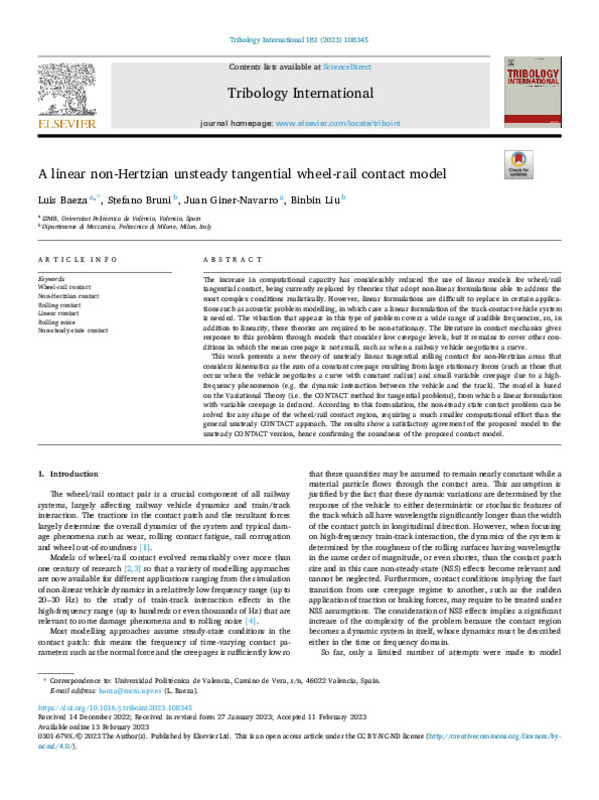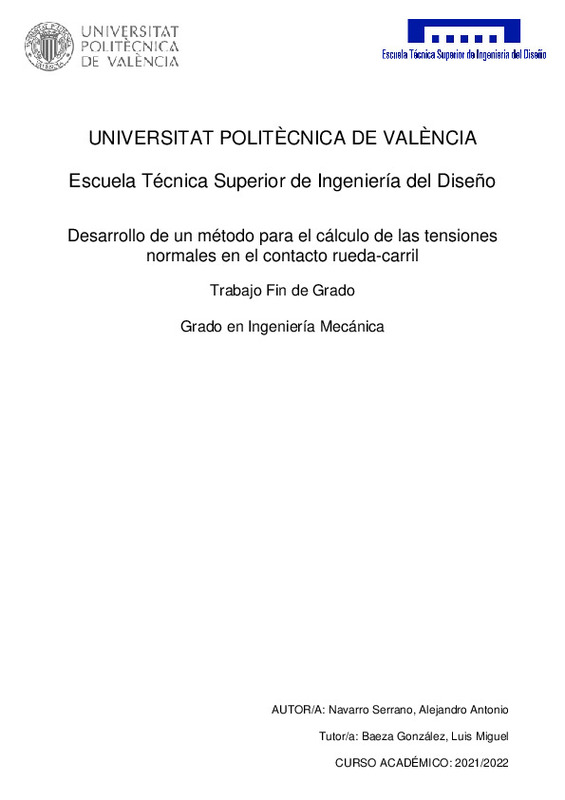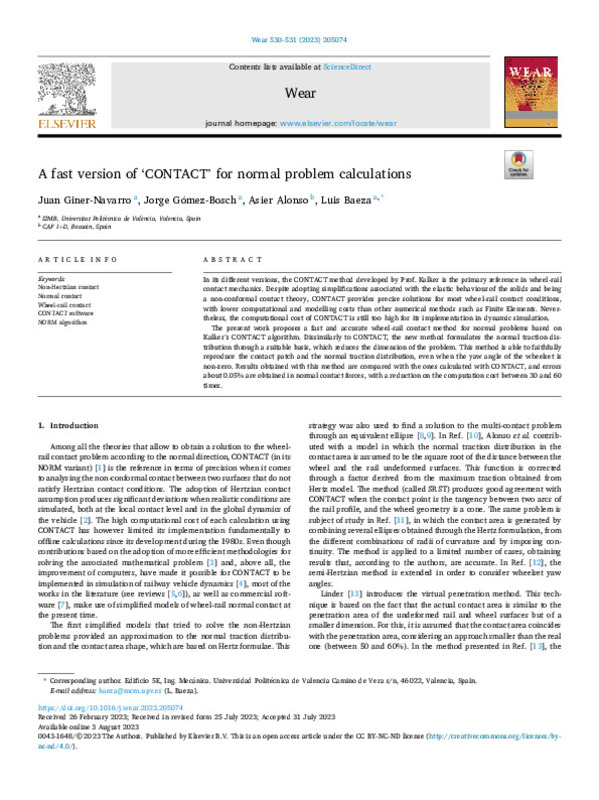JavaScript is disabled for your browser. Some features of this site may not work without it.
Buscar en RiuNet
Listar
Mi cuenta
Estadísticas
Ayuda RiuNet
Admin. UPV
A linear non-Hertzian unsteady tangential wheel-rail contact model
Mostrar el registro completo del ítem
Baeza González, LM.; Bruni, S.; Giner Navarro, J.; Liu, B. (2023). A linear non-Hertzian unsteady tangential wheel-rail contact model. Tribology International. 181:1-10. https://doi.org/10.1016/j.triboint.2023.108345
Por favor, use este identificador para citar o enlazar este ítem: http://hdl.handle.net/10251/200856
Ficheros en el ítem
Metadatos del ítem
| Título: | A linear non-Hertzian unsteady tangential wheel-rail contact model | |
| Autor: | Bruni, Stefano Liu, Binbin | |
| Entidad UPV: |
|
|
| Fecha difusión: |
|
|
| Resumen: |
[EN] The increase in computational capacity has considerably reduced the use of linear models for wheel/rail tangential contact, being currently replaced by theories that adopt non-linear formulations able to address the ...[+]
|
|
| Palabras clave: |
|
|
| Derechos de uso: | Reconocimiento - No comercial - Sin obra derivada (by-nc-nd) | |
| Fuente: |
|
|
| DOI: |
|
|
| Editorial: |
|
|
| Versión del editor: | https://doi.org/10.1016/j.triboint.2023.108345 | |
| Código del Proyecto: |
|
|
| Agradecimientos: |
|
|
| Tipo: |
|












